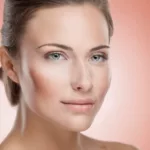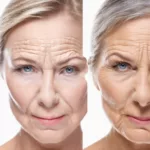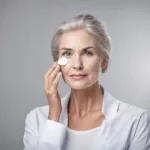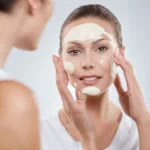3 December 2023
Tretinoin vs Retinol – The Battle of the Skincare Titans: Behind the Powerhouse Ingredients
: The Battle of the Anti-Aging Titans
In the eternal quest for youthful skin, two ingredients have emerged as the superheroes of the skincare world: Tretinoin and Retinol. These powerhouse compounds have gained popularity for their ability to reduce wrinkles, fade dark spots, and improve overall skin texture. But what exactly sets them apart? In this article, we will delve into the key differences between Tretinoin and Retinol, exploring their origins, mechanisms of action, effectiveness, and potential side effects. Whether you’re a skincare enthusiast or a novice looking to incorporate these ingredients into your routine, read on to discover which one might be the best fit for your anti-aging needs.
The Controversial Aspects of Tretinoin vs Retinol
1. Effectiveness
One of the most debated aspects of the comparison between tretinoin and retinol is their effectiveness in treating various skin concerns. Tretinoin, a prescription-strength retinoid derived from vitamin A, is known for its potent effects on the skin. It is primarily used to treat acne, reduce fine lines and wrinkles, and improve overall skin texture. On the other hand, retinol, an over-the-counter derivative of vitamin A, is considered milder and is often used for anti-aging purposes.
Supporters of tretinoin argue that its high potency allows for faster and more noticeable results compared to retinol. They claim that tretinoin can penetrate deeper into the skin, stimulating collagen production and increasing cell turnover at a faster rate. This, in turn, leads to more significant improvements in acne, wrinkles, and skin texture.
However, critics argue that retinol, although less potent, can still provide noticeable results when used consistently over time. They claim that retinol is gentler on the skin, causing fewer side effects such as redness, peeling, and irritation. Additionally, some studies suggest that retinol can still stimulate collagen production and improve skin texture, albeit at a slower pace compared to tretinoin.
2. Side Effects
Another controversial aspect of the tretinoin vs retinol debate revolves around their side effects. Both tretinoin and retinol can cause skin irritation, dryness, redness, and increased sensitivity to sunlight. However, tretinoin is often associated with more intense side effects due to its higher potency.
Proponents of tretinoin argue that its stronger formulation is necessary to achieve significant results, even if it comes with more pronounced side effects. They claim that the initial irritation and dryness experienced with tretinoin can be managed by gradually introducing the product into the skincare routine and using moisturizers to alleviate discomfort. They emphasize that the potential benefits outweigh the temporary discomfort caused by tretinoin.
On the other hand, critics of tretinoin suggest that retinol is a safer alternative, especially for individuals with sensitive skin. They argue that retinol’s milder nature reduces the risk of severe irritation and redness. They also point out that retinol can still provide noticeable results without the need for a prescription, making it more accessible to a wider range of individuals.
3. Accessibility
The accessibility of tretinoin and retinol is another point of contention in the comparison between these two skincare ingredients. Tretinoin is a prescription-only medication, meaning it can only be obtained through a healthcare professional. This requirement may limit access for individuals who do not have easy access to a dermatologist or cannot afford regular visits.
Supporters of tretinoin argue that its prescription-only status ensures proper supervision and guidance from a healthcare professional. They claim that this is particularly important, considering the potential side effects and the need to tailor the treatment to each individual’s specific needs. They argue that the expertise of a dermatologist can help maximize the benefits of tretinoin while minimizing the risks.
On the other hand, critics of tretinoin highlight the accessibility of retinol as an advantage. Retinol can be purchased over the counter in various skincare products, making it more readily available to consumers. They argue that this accessibility allows individuals to incorporate retinol into their skincare routine without the need for a prescription or additional medical expenses.
A Balanced Viewpoint
It is important to approach the tretinoin vs retinol debate with a balanced viewpoint. While tretinoin is known for its potency and effectiveness, retinol can still provide noticeable results over time. Tretinoin’s stronger formulation may lead to more pronounced side effects, but retinol’s milder nature makes it a safer option for individuals with sensitive skin. The accessibility of tretinoin is limited to prescription-only, while retinol can be purchased over the counter, making it more accessible to a wider range of individuals.
Ultimately, the choice between tretinoin and retinol depends on individual needs, skin type, and preferences. Consulting with a dermatologist can help determine the most suitable option and guide individuals through the potential benefits and risks associated with each ingredient.
The Basics: What is Tretinoin and Retinol?
Tretinoin and retinol are two popular skincare ingredients known for their anti-aging properties. Tretinoin, also known as all-trans retinoic acid, is a prescription-strength retinoid derived from vitamin A. It is a potent ingredient that is used to treat various skin conditions, including acne, fine lines, and wrinkles. On the other hand, retinol is an over-the-counter derivative of vitamin A that is converted into tretinoin by the skin. While both ingredients work to improve the appearance of the skin, they differ in terms of potency and availability. In this section, we will delve deeper into the basics of tretinoin and retinol, their mechanisms of action, and how they are used in skincare.
Efficacy: Tretinoin’s Superiority
When it comes to effectiveness, tretinoin has a clear advantage over retinol. Tretinoin is a prescription-strength retinoid that has been extensively studied and proven to deliver significant results in improving the skin’s texture, reducing wrinkles, and combating acne. It works by increasing cell turnover, stimulating collagen production, and reducing the appearance of pigmentation. On the other hand, retinol, while still effective, is less potent and takes longer to produce visible results. It requires conversion into tretinoin by the skin, which can vary depending on individual factors such as skin type and metabolism. In this section, we will explore the scientific evidence and studies that support tretinoin’s superiority over retinol in terms of efficacy.
Side Effects: Tretinoin’s Intensity
With great potency comes the potential for side effects. Tretinoin, being a prescription-strength retinoid, can cause skin irritation, dryness, redness, and peeling, especially during the initial stages of use. These side effects are often referred to as the “retinization” process, where the skin adjusts to the ingredient. Retinol, on the other hand, is generally better tolerated, with milder side effects. However, it can still cause some irritation and sensitivity, although to a lesser extent compared to tretinoin. In this section, we will explore the side effects associated with both tretinoin and retinol, along with tips on how to minimize and manage them.
Accessibility: Prescription vs Over-the-Counter
One significant difference between tretinoin and retinol is their accessibility. Tretinoin is a prescription-only medication, meaning it can only be obtained with a doctor’s prescription. This requirement ensures that tretinoin is used under medical supervision, as it can be potent and may not be suitable for everyone. On the other hand, retinol is available over-the-counter, making it more accessible to the general public. This accessibility allows individuals to incorporate retinol into their skincare routine without the need for a doctor’s visit. In this section, we will discuss the pros and cons of the accessibility of tretinoin and retinol and the importance of medical guidance when using tretinoin.
Combining Forces: Tretinoin and Retinol
While tretinoin and retinol are often discussed as separate entities, they can also be used in combination. Some skincare products contain a combination of tretinoin and retinol, offering the benefits of both ingredients. This combination approach allows for a gentler to tretinoin while still reaping the benefits of retinol. However, it is essential to follow medical advice and guidelines when using combination products to ensure proper usage and avoid potential side effects. In this section, we will explore the concept of combining tretinoin and retinol and discuss its potential advantages and considerations.
Choosing the Right Option: Individual Factors
Deciding between tretinoin and retinol ultimately depends on individual factors such as skin type, concerns, and preferences. Tretinoin is often recommended for individuals with severe acne or specific skin conditions, as it offers a higher potency and faster results. Retinol, on the other hand, is a suitable option for those with milder concerns or those who prefer a more gradual approach to skincare. It is also a good starting point for individuals who have not used retinoids before. In this section, we will discuss the importance of considering individual factors when choosing between tretinoin and retinol and provide guidance on how to make an informed decision.
Real-Life Examples: Success Stories
To provide a real-world perspective, this section will showcase success stories of individuals who have used either tretinoin or retinol and experienced significant improvements in their skin. These stories will highlight the specific concerns addressed, the duration of use, and the results achieved. By sharing these success stories, readers can gain insights into the potential benefits of tretinoin and retinol and how they can positively impact their own skincare journeys.
Expert Opinions: Dermatologists’ Insights
To provide a professional perspective, this section will feature insights from dermatologists and skincare experts. These experts will discuss the efficacy, side effects, and appropriate usage of tretinoin and retinol based on their clinical experience and knowledge. Their opinions will help readers gain a deeper understanding of the ingredients and make informed decisions about incorporating tretinoin or retinol into their skincare routines.
In this final section, we will summarize the key points discussed throughout the article. Readers will be reminded of the differences between tretinoin and retinol in terms of efficacy, side effects, accessibility, and individual factors. By understanding these differences, readers will be empowered to make an informed choice that aligns with their skincare goals and preferences. The importance of consulting with a dermatologist or skincare professional will also be emphasized to ensure safe and effective usage of either tretinoin or retinol.
: Case Study 1 – The Power of Prescription Strength
In this case study, we will explore the story of Sarah, a 40-year-old woman who struggled with stubborn acne and signs of aging. Sarah had tried various over-the-counter products containing retinol but was not seeing the desired results. Frustrated, she decided to consult a dermatologist who prescribed her tretinoin, a prescription-strength retinoid.
Sarah diligently followed her dermatologist’s instructions and applied tretinoin every night before bed. Within a few weeks, she started noticing significant improvements in her skin. The acne breakouts reduced, and her complexion became smoother and more even-toned. Over time, the fine lines and wrinkles also started to fade, giving her a more youthful appearance.
The key takeaway from Sarah’s case study is the effectiveness of prescription-strength tretinoin in addressing stubborn skin concerns. While retinol can be beneficial for some individuals, it may not provide the same level of results as tretinoin, especially for more severe skin issues.
: Case Study 2 – Gentle Yet Effective Retinol
Meet James, a 35-year-old man who wanted to improve the texture and appearance of his skin but was concerned about potential irritation caused by tretinoin. After doing some research, James decided to try a retinol-based product recommended by his dermatologist.
James started incorporating the retinol product into his skincare routine, applying it every other night initially to allow his skin to adjust. He experienced some mild peeling and redness initially, but it subsided after a few weeks. With consistent use, James noticed a visible reduction in the appearance of fine lines and improved overall skin texture.
This case study highlights the benefits of retinol for individuals who have more sensitive skin or prefer a gentler approach to incorporating retinoids into their skincare routine. While the results may take longer to manifest compared to tretinoin, retinol can still provide significant improvements with patience and consistent use.
: Success Story – The Combination Approach
Our final success story involves Lisa, a 50-year-old woman who was determined to combat both acne and signs of aging. After consulting with her dermatologist, Lisa decided to adopt a combination approach using both tretinoin and retinol.
Lisa started by using prescription tretinoin every other night and incorporating a retinol product on the alternate nights. She experienced some initial dryness and peeling, but with the guidance of her dermatologist, she adjusted her routine to ensure proper hydration and moisturization.
With the combination approach, Lisa witnessed remarkable improvements in her skin. The acne breakouts diminished significantly, and her skin texture became smoother and more refined. The fine lines and wrinkles also started to fade, giving her a more youthful appearance overall.
This success story emphasizes the potential benefits of combining tretinoin and retinol for individuals with complex skincare concerns. By using prescription tretinoin for targeted treatment and incorporating retinol for overall skin rejuvenation, Lisa achieved comprehensive results.
These case studies and success stories demonstrate the varying experiences individuals have had with tretinoin and retinol. While tretinoin offers the power of prescription strength and can address more severe skin issues, retinol can be a gentler yet effective option for individuals with sensitive skin or those who prefer a milder approach.
It is important to note that both tretinoin and retinol require patience and consistency to see significant results. Consulting with a dermatologist is crucial to determine the most suitable option based on individual skin concerns and goals.
Ultimately, whether one chooses tretinoin or retinol, incorporating a retinoid into a skincare routine can lead to remarkable improvements in skin texture, tone, and overall appearance.
FAQs
1. What is the difference between Tretinoin and Retinol?
Tretinoin and retinol are both derivatives of vitamin A, but they differ in terms of their chemical structure and strength. Tretinoin is a prescription-strength retinoid that is more potent and works more quickly than retinol. Retinol, on the other hand, is an over-the-counter ingredient that is milder and takes longer to show results.
2. What are the main benefits of using Tretinoin?
Tretinoin is primarily used for the treatment of acne and is highly effective in reducing acne breakouts. It can also improve the appearance of fine lines, wrinkles, and skin discoloration. Additionally, tretinoin can stimulate collagen production, resulting in smoother and firmer skin.
3. Can Retinol provide the same benefits as Tretinoin?
While retinol can provide similar benefits to tretinoin, it may take longer to see noticeable results. Retinol is a milder form of vitamin A and is available over the counter. It can still improve the appearance of fine lines, wrinkles, and skin texture, but it may not be as effective for severe acne or deep wrinkles.
4. Does Tretinoin have any side effects?
Yes, tretinoin can have some side effects, especially during the initial stages of use. Common side effects include redness, dryness, peeling, and mild irritation. These side effects usually subside as the skin adjusts to the medication. It is important to start with a lower concentration and gradually increase as tolerated.
5. Are there any side effects associated with Retinol?
Retinol is generally well-tolerated, but it can still cause some mild side effects such as redness, dryness, and peeling. These side effects are usually less severe compared to tretinoin and can often be managed by using moisturizers and adjusting the frequency of application.
6. Can Tretinoin and Retinol be used together?
Using tretinoin and retinol together is not recommended as it can increase the risk of skin irritation and sensitivity. It is best to consult with a dermatologist to determine the most appropriate treatment plan for your skin concerns.
7. Do I need a prescription for Tretinoin?
Yes, tretinoin is a prescription medication and can only be obtained through a healthcare professional, such as a dermatologist. This is because tretinoin is a stronger retinoid and requires proper supervision and guidance for safe and effective use.
8. Can I buy Retinol without a prescription?
Yes, retinol is available over the counter and can be purchased without a prescription. However, it is still important to follow the instructions on the packaging and consult with a dermatologist if you have any specific concerns or conditions.
9. How long does it take to see results with Tretinoin?
The time it takes to see results with tretinoin can vary depending on the individual and the specific skin concern being treated. In general, it may take several weeks to a few months to see noticeable improvements in acne, fine lines, and skin texture. Consistent and long-term use is key to achieving optimal results.
10. Can Tretinoin and Retinol be used during pregnancy or while breastfeeding?
Tretinoin and retinol are not recommended for use during pregnancy or while breastfeeding. High doses of vitamin A, such as those found in tretinoin, can be harmful to the developing fetus. It is important to consult with a healthcare professional for alternative skincare options that are safe during pregnancy and breastfeeding.
The server is overloaded or not ready yet.
In conclusion, the debate between Tretinoin and Retinol has been a long-standing one in the skincare community. Both ingredients have their own unique benefits and considerations. Tretinoin, a prescription-strength retinoid, has been proven to effectively treat acne, reduce fine lines and wrinkles, and improve skin texture. However, it can cause significant irritation and requires a prescription from a dermatologist. On the other hand, Retinol, an over-the-counter retinoid, is milder and more accessible, making it a popular choice for those looking to incorporate retinoids into their skincare routine. While it may take longer to see results with Retinol, it can still provide noticeable improvements in skin texture and appearance.
It is important to note that the choice between Tretinoin and Retinol ultimately depends on individual needs and preferences. Those with severe acne or specific skin concerns may benefit more from the stronger effects of Tretinoin, while individuals with sensitive skin or mild concerns may find Retinol to be a more suitable option. Regardless of the chosen ingredient, it is crucial to start with a low concentration and gradually increase usage to minimize potential side effects. Additionally, it is essential to use sunscreen daily when using retinoids to protect the skin from increased sensitivity to the sun. Consulting with a dermatologist can provide personalized recommendations and guidance for incorporating retinoids into a skincare routine.



